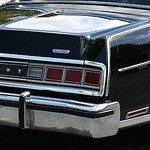I was at the Canadian Embassy on Nguyen Du Street in Saigon when they lowered the Maple Leaf flag for the last time on April 24, 1975. In those final days of the South Vietnamese republic the question was, when and how will the end come?
I knew South Vietnam relatively well. I’d first traveled from the Mekong Delta to the Demilitarized Zone in 1966 as a very green reporter with a couple of hand-cranked 16mm cameras from CFCN-TV in Calgary. I was 23. It was a journalistic passage of sorts and my first trip abroad. South Vietnam was also my first experience in the developing world, a place of extreme wealth and dire poverty, of sickness and suffering and corruption.
In ‘66 most correspondents in Vietnam were American journos doing hometown stories. A reporter would show up at an airbase and say, “Who’s here from Tulsa?” Their stories were intended to be inspirational rather than analytical.
That’s not to say there wasn’t meaningful journalism. Americans like David Halberstam and Peter Arnett and Canadians Michael Maclear and Bill Cunningham had generated powerful accounts of the escalating conflict. My interest was directly inspired by a 1965 CBC documentary The Mills of the Gods produced by the legendary Beryl Fox.
I wanted to better understand the country and a civil war fired by Cold War superpower intervention. The battlefields of Vietnam opened my eyes. As callow as I was, I worked to cover the stories I believed Canadians wanted to hear. I got to artillery firebases and joined rice paddy patrols. Before the 1968 Tet offensive visiting journalists were welcomed by the U.S. military.
I flew in helicopter gunships, forward air control Cessnas and in the backseat of a Super Sabre jet fighter on a bombing mission along the Cambodian border. I spent time patrolling the Mekong River on water-jet propelled gunboats of the sort featured in Apocalypse Now.
There was a spectrum of opinion on Vietnam in those years. Officially the Canadian government professed neutrality, and there was a growing anti-war movement. Yet thousands of Canadians joined American forces to serve there.
Why did they fight? Adventure perhaps, or an idealized sense of joining the defence of a western democracy from the threat of communist expansionism and the so-called Domino Effect. Their stories are rarely told. One, Peter Lemon of Toronto, became the only Canadian to win the Congressional Medal of Honor in that war. In 1970 he fended off Vietcong attackers in hand-to-hand combat while wounded comrades with his U.S. Army Ranger unit were safely evacuated to an aid station.
By April 1975 North Vietnamese forces had surrounded Saigon. Even then, as fighting raged around the capital, there were incongruous moments. I remember visiting the rooftop restaurant of the old Caravelle Hotel where waiters served bacon and eggs to journalists filming air and ground activity on the outskirts of the city.
At the Canadian Embassy on Nguyen Du Street refugees queued for hours seeking visas. Many had relatives in Montréal and pleaded for sanctuary. That last day the staff put a sign on the Embassy door that read “Come Back Tomorrow,” though it was closed for good.
My cameraman Ian Wilson and I headed for Tan Son Nhat Airport to deliver our film to a departing flight to Hong Kong and the satellite uplink. When we arrived Ian pointed out, “Look what they’re loading onto the Hercules.” It was the Ambassador’s limousine. They had room in the cargo bay for the limo but not the Embassy employees and would-be refugees who’d begged to flee the Vietcong and North Vietnamese.
We got our film out. It aired on the National and key elements were poached and aired by CTV. The story of the limo was raised in Parliament. “Where was Canada?” John Diefenbaker asked the Commons. “Your country, my country, all over Asia, Canada will be pointed at with critical fingers.”
Our crew flew out of the U.S. Embassy in Saigon late in the evening of April 30, 1975 aboard one of the last Marine Sea Knight helicopters in the American evacuation and landed aboard the USS Okinawa, transferring later to the Midway and Blue Ridge. The Americans, both diplomats and journalists, focused on helping their Vietnamese employees and families. From the U.S. Embassy and Tan Son Nhat Airport some 7,000 South Vietnamese were airlifted out to the Sixth Fleet in the South China Sea.
Someday perhaps I’ll write a more detailed account of early experiences covering the Vietnam and Cambodia wars. There’s no rush. I’m told that with aging the most distant memories remain the most vivid. I don’t think I’ll ever forget these early career experiences including the evacuation of the Embassy limo.
(Editor’s note: the author is former MP for Thornhill, Ont., a Canadian Broadcasting Hall of Famer and former anchor and reporter for CTV, CBC, NBC and Global News. “I have many memories of my early career as a foreign correspondent,” says Kent. “This anecdote, though minor in the Southeast Asian conflict, remains an interesting moment in history.” Mr. Kent’s commentary was originally published March 15, 2020)






